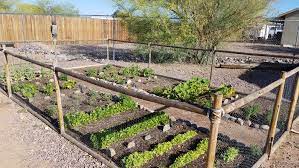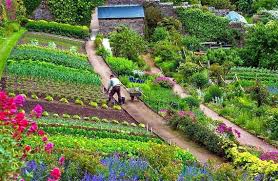A survival garden is a fascinating concept that entails growing a splendid garden not for mere aesthetic purposes, but primarily to cater to one’s basic sustenance. This garden is grown with the long-term goal of being prepared for unexpected circumstances that may lead to restricted access to grocery stores and food supplies. The focus is on growing plants that are rich in nutrition, which can be safely stored or preserved for later consumption. In a survival garden, you can expect to find a fantastic assortment of fruits, vegetables, herbs, and grains, all of which play a significant role in nutritional enrichment. The garden may also include seeds for future planting, as well as essential tools and equipment for maintaining the garden in tip-top shape. Whether you have a small backyard or a larger plot, the survival garden can be efficiently grown using the available space and resources at your disposal.

When it comes to creating a survival garden, you need to consider a variety of factors that may determine what crops to plant. Not all plants are going to be a good fit and so it’s vital to focus on those plants that can provide the greatest value. A good place to start is by looking at which plants are nutritious and versatile, meaning they can be used in a wide range of recipes. You also want to look for plants that don’t require advanced gardening skills, so they can be cultivated in most environments. Additionally, it’s essential to prioritize crops that keep well over a long period of time, thus avoiding spoilage during the survival phase. Root vegetables, legumes, and leafy greens are all practical options that can provide a well-rounded array of nutrients. Furthermore, fruit trees could be brought into the mix, providing an additional fresh fruit source. Lastly, having herbs in your survival garden offers both the potential for culinary enjoyment and medicinal purposes.
To determine the size of a survival garden, there are a few factors that need to be considered. Firstly, the number of people the garden will need to provide for. It is recommended to have at least 200 square feet of growing space per adult, and 100 square feet per child. Secondly, the types of plants grown will also influence the size of the garden. Vegetables that are heavy producers, like beans and tomatoes, will require more space than those that produce less, like herbs and leafy greens. Additionally, the climate and growing season of the area will need to be considered, as well as the specific nutritional needs of those who will be consuming the produce. It is also recommended to include some non-perishable foods and a source of protein in a survival plan, as well as learning to preserve and store excess produce.


To save seeds from a survival garden, it is important to first select healthy and mature plants with the desired traits. Allow the plants to go to seed and dry out on the plant, then harvest the seed pods and place them in a paper or cloth bag. Hang the bag in a dry, well-ventilated area for a few weeks to allow the seeds to fully dry out. Once the seeds are completely dry, separate them from the chaff and debris using a sieve or by hand. Label the seeds with the variety and date of collection before storing them in an airtight container in a cool, dry and dark place. It is also important to regularly rotate stored seeds and conduct germination tests to ensure viability. By saving seeds, a survival garden can become a sustainable source of food for the future.

